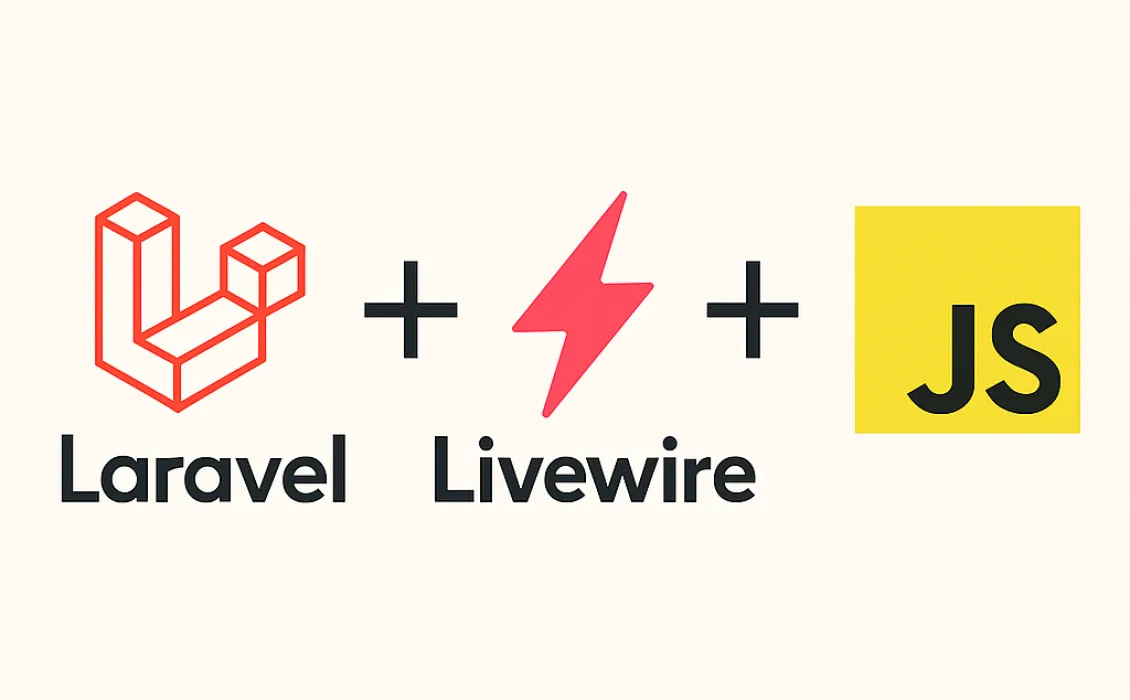Livewire has become a popular choice for developers who want to create PEMPA applications without leaving the power of Laravel. Although it seems plain on the surface—but when ponder over its layers you will fine its just a combination of PHP classes and frontend JavaScript that works seamlessly together.
1. Components Classes in the Backend
Livewire applications are all about components, and unlike JavaScript frameworks, these components are written entirely in PHP. Each component:
- Is a PHP class that extends
Livewire\Component
- May contain properties, lifecycle hooks, and methods
- Can directly query the database
- Returns a Blade view that represents the HTML for that component
This means the logic, data fetching, and rendering responsibilities live server-side, keeping the stack clean and familiar for Laravel developers.
2. Components Respond with HTML
When a Livewire component is first loaded, the server renders the component’s Blade view and returns the resulting HTML to the frontend. This HTML includes special wire:
For example:
<button wire:click="increment">+</button>
<span>{{ $count }}</span>
Here, wire:click="increment"
3. Wire Attributes Drive Interactivity
The frontend uses custom HTML attributes like wire:modelwire:clickwire:submit.prevent
You never write JavaScript functions like handleClick()
4. Persistant State via JSON Payload
In the background, Livewire generate a serialized JSON payload within the HTML response. This payload contains the component’s current state, including:
- Property values
- Component name
- Component ID (for tracking)
This JSON is invisible to users but using Chrome Dev Tool or simliar you can inspect the markup. It enables Livewire to keep the state updated and persist between frontend and backend.
This embedded data is important because when the user triggers an event like a click, Livewire sends this state with updates so the backend can re-render the component with updated state.
5. All Event Handling Goes Through Ajax
When you click a button or change an input, the frontend doesn’t run JavaScript logic locally. Instead, Livewire uses its built-in JavaScript library to make a network request fetch()
This request includes:
- The event name (e.g.,
increment) - The component name and ID
- The current component state (from the embedded JSON)
- Any parameters for the method
The server re-instantiates the component, rehydrates it with the state, runs the requested method (like increment()
6. Global Route For Component Communication
All Livewire components fetch calls are ponited to a global endpoint, usually located at:
POST /livewire/message/{component}
This is the single route that receives every AJAX request sent by the frontend. Laravel handles the request like any normal controller, but instead of returning a full page, it only sends back:
- Updated HTML
- Updated state
- Possibly updated browser events
Because of this centralized routing, Livewire can handle multiple components on the page without needing to define separate endpoints for each. But in the background
- Livewire uses a dedicated controller and route (
/livewire/message/{component}) which is internally registered by Livewire's service provider.
- You usually don’t see or register this route manually.
- It’s not truly one global route—internally it's handled by Laravel’s routing system and is component-aware.
Conclusion
Livewire cleverly bridges backend and frontend, giving Laravel developers the power to build dynamic UIs without writing much JavaScript. Under the hood, it's a careful combination of:
- PHP components rendering Blade
- JSON-encoded state passed to and from the frontend
- Automatic JavaScript hooks that convert HTML attributes into interactions
- A global Livewire route that acts as a command center for communication
Once you understand this architecture, you can better debug, optimize, and even extend Livewire to fit advanced use cases or even build your own alternate solution.
If you found this post helpful, consider supporting my work — it means a lot.


